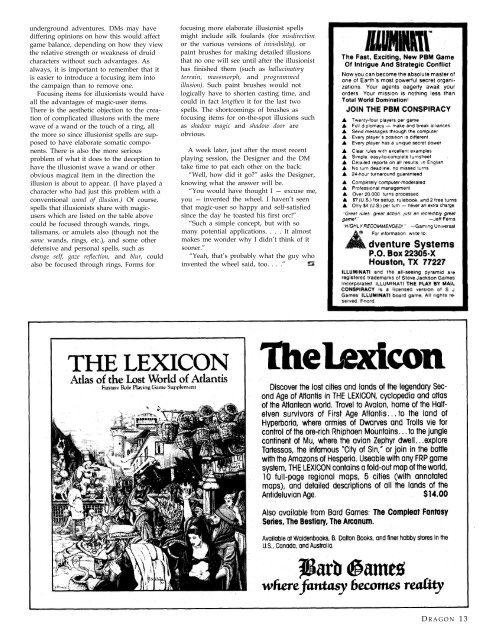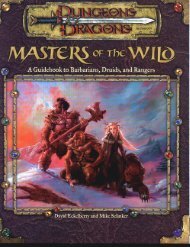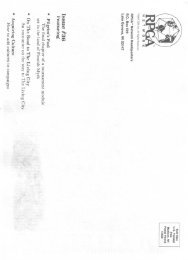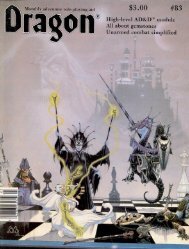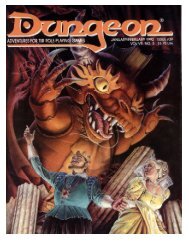Accessory - Dragon Magazine #111.pdf - Index of
Accessory - Dragon Magazine #111.pdf - Index of
Accessory - Dragon Magazine #111.pdf - Index of
You also want an ePaper? Increase the reach of your titles
YUMPU automatically turns print PDFs into web optimized ePapers that Google loves.
underground adventures. DMs may have<br />
differing opinions on how this would affect<br />
game balance, depending on how they view<br />
the relative strength or weakness <strong>of</strong> druid<br />
characters without such advantages. As<br />
always, it is important to remember that it<br />
is easier to introduce a focusing item into<br />
the campaign than to remove one.<br />
Focusing items for illusionists would have<br />
all the advantages <strong>of</strong> magic-user items.<br />
There is the aesthetic objection to the creation<br />
<strong>of</strong> complicated illusions with the mere<br />
wave <strong>of</strong> a wand or the touch <strong>of</strong> a ring, all<br />
the more so since illusionist spells are supposed<br />
to have elaborate somatic components.<br />
There is also the more serious<br />
problem <strong>of</strong> what it does to the deception to<br />
have the illusionist wave a wand or other<br />
obvious magical item in the direction the<br />
illusion is about to appear. (I have played a<br />
character who had just this problem with a<br />
conventional wand <strong>of</strong> illusion.) Of course,<br />
spells that illusionists share with magicusers<br />
which are listed on the table above<br />
could be focused through wands, rings,<br />
talismans, or amulets also (though not the<br />
same wands, rings, etc.), and some other<br />
defensive and personal spells, such as<br />
change self, gaze reflection, and blur, could<br />
also be focused through rings. Forms for<br />
focusing more elaborate illusionist spells<br />
might include silk foulards (for misdirection<br />
or the various versions <strong>of</strong> invisibility), or<br />
paint brushes for making detailed illusions<br />
that no one will see until after the illusionist<br />
has finished them (such as hallucinatory<br />
terrain, massmorph, and programmed<br />
illusion). Such paint brushes would not<br />
logically have to shorten casting time, and<br />
could in fact lengthen it for the last two<br />
spells. The shortcomings <strong>of</strong> brushes as<br />
focusing items for on-the-spot illusions such<br />
as shadow magic and shadow door are<br />
obvious.<br />
A week later, just after the most recent<br />
playing session, the Designer and the DM<br />
take time to pat each other on the back:<br />
“Well, how did it go?” asks the Designer,<br />
knowing what the answer will be.<br />
“You would have thought I — excuse me,<br />
you — invented the wheel. I haven’t seen<br />
that magic-user so happy and self-satisfied<br />
since the day he toasted his first orc!”<br />
“Such a simple concept, but with so<br />
many potential applications. . . . It almost<br />
makes me wonder why I didn’t think <strong>of</strong> it<br />
sooner.”<br />
“Yeah, that’s probably what the guy who<br />
invented the wheel said, too. . . .”<br />
D RAGON 13


